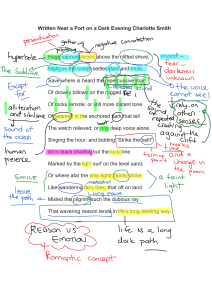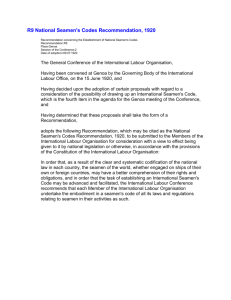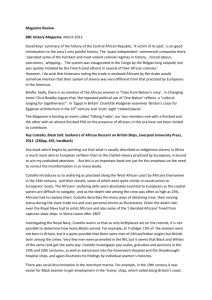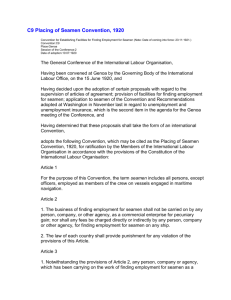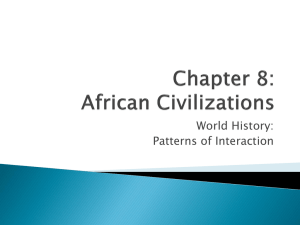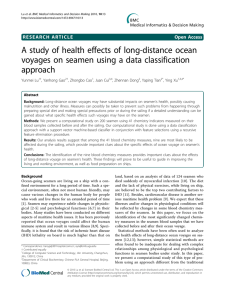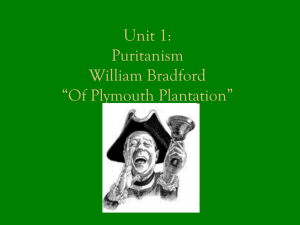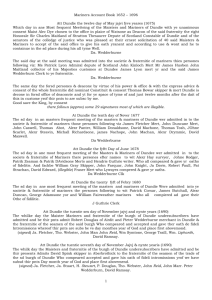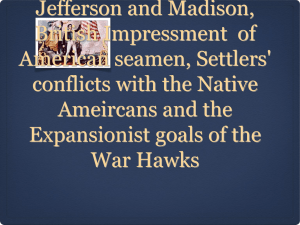here - Black and Asian Studies Association
advertisement
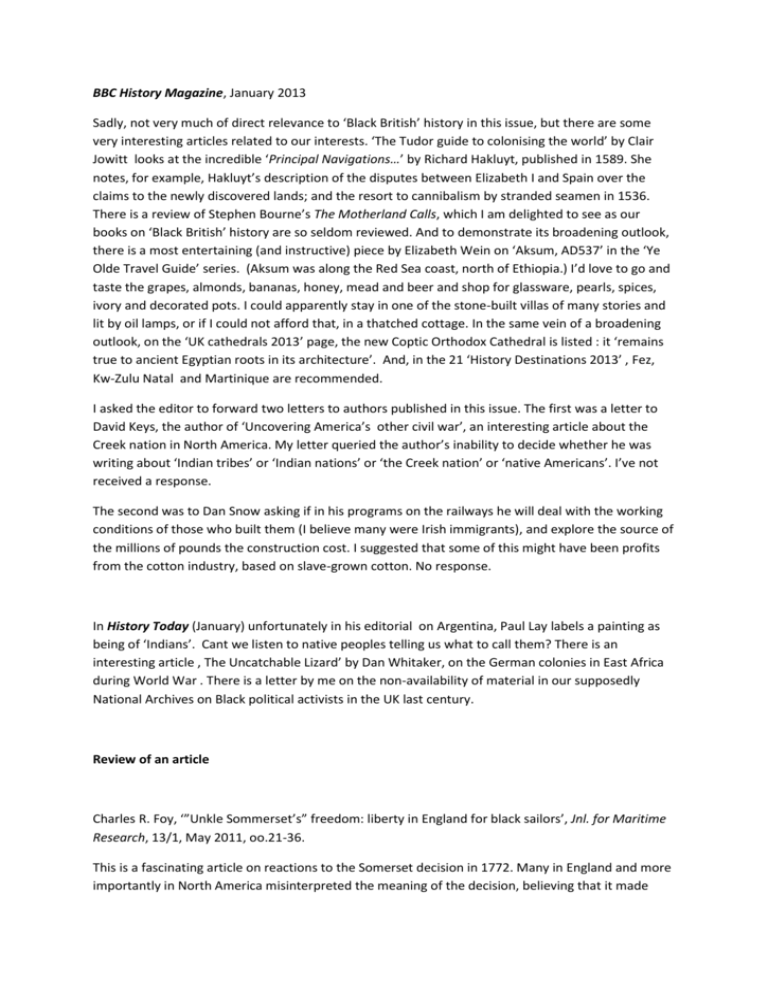
BBC History Magazine, January 2013 Sadly, not very much of direct relevance to ‘Black British’ history in this issue, but there are some very interesting articles related to our interests. ‘The Tudor guide to colonising the world’ by Clair Jowitt looks at the incredible ‘Principal Navigations…’ by Richard Hakluyt, published in 1589. She notes, for example, Hakluyt’s description of the disputes between Elizabeth I and Spain over the claims to the newly discovered lands; and the resort to cannibalism by stranded seamen in 1536. There is a review of Stephen Bourne’s The Motherland Calls, which I am delighted to see as our books on ‘Black British’ history are so seldom reviewed. And to demonstrate its broadening outlook, there is a most entertaining (and instructive) piece by Elizabeth Wein on ‘Aksum, AD537’ in the ‘Ye Olde Travel Guide’ series. (Aksum was along the Red Sea coast, north of Ethiopia.) I’d love to go and taste the grapes, almonds, bananas, honey, mead and beer and shop for glassware, pearls, spices, ivory and decorated pots. I could apparently stay in one of the stone-built villas of many stories and lit by oil lamps, or if I could not afford that, in a thatched cottage. In the same vein of a broadening outlook, on the ‘UK cathedrals 2013’ page, the new Coptic Orthodox Cathedral is listed : it ‘remains true to ancient Egyptian roots in its architecture’. And, in the 21 ‘History Destinations 2013’ , Fez, Kw-Zulu Natal and Martinique are recommended. I asked the editor to forward two letters to authors published in this issue. The first was a letter to David Keys, the author of ‘Uncovering America’s other civil war’, an interesting article about the Creek nation in North America. My letter queried the author’s inability to decide whether he was writing about ‘Indian tribes’ or ‘Indian nations’ or ‘the Creek nation’ or ‘native Americans’. I’ve not received a response. The second was to Dan Snow asking if in his programs on the railways he will deal with the working conditions of those who built them (I believe many were Irish immigrants), and explore the source of the millions of pounds the construction cost. I suggested that some of this might have been profits from the cotton industry, based on slave-grown cotton. No response. In History Today (January) unfortunately in his editorial on Argentina, Paul Lay labels a painting as being of ‘Indians’. Cant we listen to native peoples telling us what to call them? There is an interesting article , The Uncatchable Lizard’ by Dan Whitaker, on the German colonies in East Africa during World War . There is a letter by me on the non-availability of material in our supposedly National Archives on Black political activists in the UK last century. Review of an article Charles R. Foy, ‘”Unkle Sommerset’s” freedom: liberty in England for black sailors’, Jnl. for Maritime Research, 13/1, May 2011, oo.21-36. This is a fascinating article on reactions to the Somerset decision in 1772. Many in England and more importantly in North America misinterpreted the meaning of the decision, believing that it made slavery illegal in England. It didn’t, of course. The mis-information spread among the enslaved in America: for the period 1773-1776, Roy found ‘almost 150 references to runaways fleeing via the sea in North American newspapers, more than tripling the number of such advertisements in the prior three years’. Some ended up working on privateers, while others served in the Royal Navy – but the exact number is ‘unobtainable’. It is ‘estimated that 3000 black seamen were evacuated to England at the end of the revolutions’. Foy then examines the variable treatment of Black seamen by the RN and by some courts in England and Scotland. (His claim that slavery was abolished in Scotland in 1778 is mistaken, as the Scots could enslave Scottish workers till 1799.) He then details the story of four seamen as illustrations for struggles within courts, with customs officials, with judges, et al. Then Looking what we would call social class issues, he reports that ‘black refugees in England found that each of the four foundations of English liberty was circumscribed for persons without property’, and gives many examples of the treatment of some black seamen.
